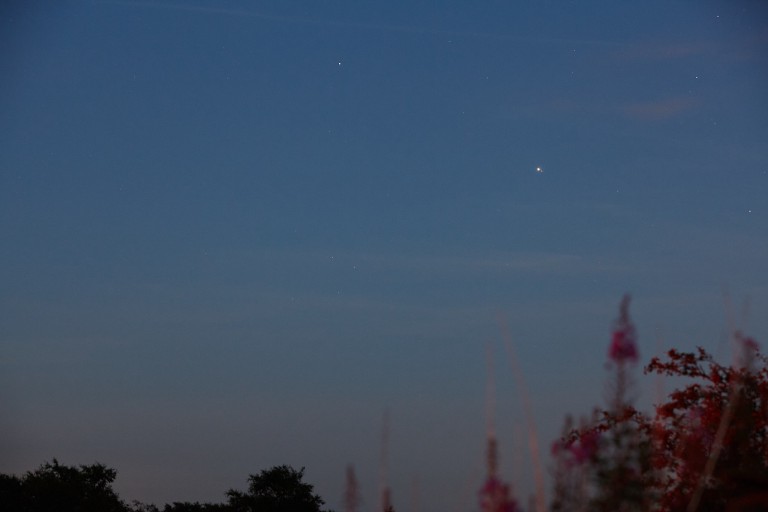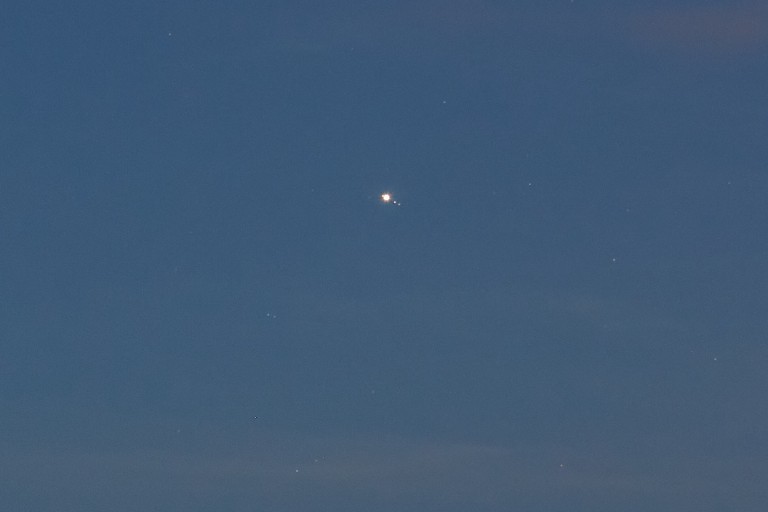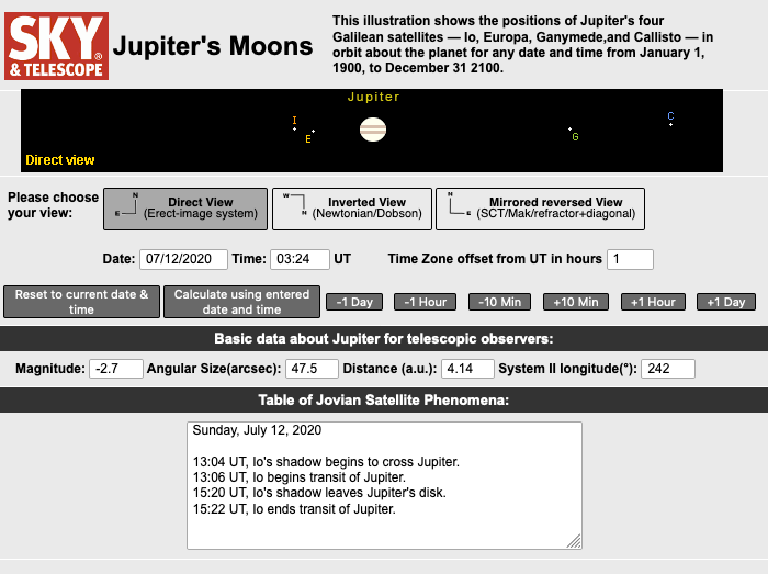After a typically dull, grey week of thick cloud covering Manchester there was finally a forecast for clear skies. So I did what any rational person would do at 8pm on a Saturday night: I packed my camera bag, stashed it by the door, set an alarm for 1am, and got myself an early night.
I wasn’t ready for it when the time came but, groggy-eyed, I dragged myself out to the car and took a 20 minute drive to my chosen vantage point above the city. I’d done a little research ahead of time so I was confident it’d be no trouble at all to find my subject, even if it was 103.5 million km away.
I was wrong, couldn’t find it anywhere.
Was it the wrong night? The wrong time? There were plenty of stars out, and a couple of other planets by the looks of things, but I was here for the comet. Lucky for me I already live in a future where I can pull out my phone and using a combination of a newspaper article (“…not far from Capella…”) and SkyView app I can find pretty much anything in the night sky in a matter of seconds.
Right night. Right time. Wrong direction.

Neowise – ISO 3200, 70mm, ƒ/2.8, 0.25s
Not the most spectacular photo ever taken—it was much more impressive in real life—but it’s the best I could get. I took a few more shots that were more zoomed in but as soon as the horizon’s out of shot you lose any sense of scale and position.
Having got my phone out I checked what else I was looking and it was basically half the solar system! Venus, Mars, the Moon, Saturn, and Jupiter were all out. It was spectacular!
I’ve had a bit of a thing for Jupiter since seeing it “up close" on a visit to Kielder Observatory. My camera’s not quite got the same capabilities but I thought I’d give it a go. The best of the bunch is below. That’s Saturn in the top-centre and Jupiter on the right. Looks pretty good!

Saturn and Jupiter – ISO 1600, 90mm, ƒ/4.5, 2.5s
It was only when I got back home and looked at my photos on a screen bigger than a postage stamp that I realised I’d managed to capture Jupiters moons too! As soon as I saw the detail I was sure they were moons, I just needed some way to confirm it and find out which ones..

The same photo, cropped to show Jupiter and its moons
A few minutes of searching brought me to an article about an ancient looking webpage that tells you the position of Jupiter’s moons at any given date and time. I keyed everything in and this is what I got:

It’s a match! Io and Europa were too close together to be discernible in my photo but you can see that they’re there. And Ganymede and Callisto are clearly visible on the right hand side. I just had a Galileo moment, 410 years late. He apparently went through the same process in January 1610, thinking at first they were distant stars and then, after several nights of observations, concluded that:
…they were not stars at all but moons orbiting around Jupiter, providing strong evidence for the Copernican theory that most celestial objects did not revolve around the Earth.
John Uri, NASA Johnson Space Center
How cool is it that with some off-the-shelf camera gear you can see things that, when they were first seen, led to such important scientific discoveries?
☄️
